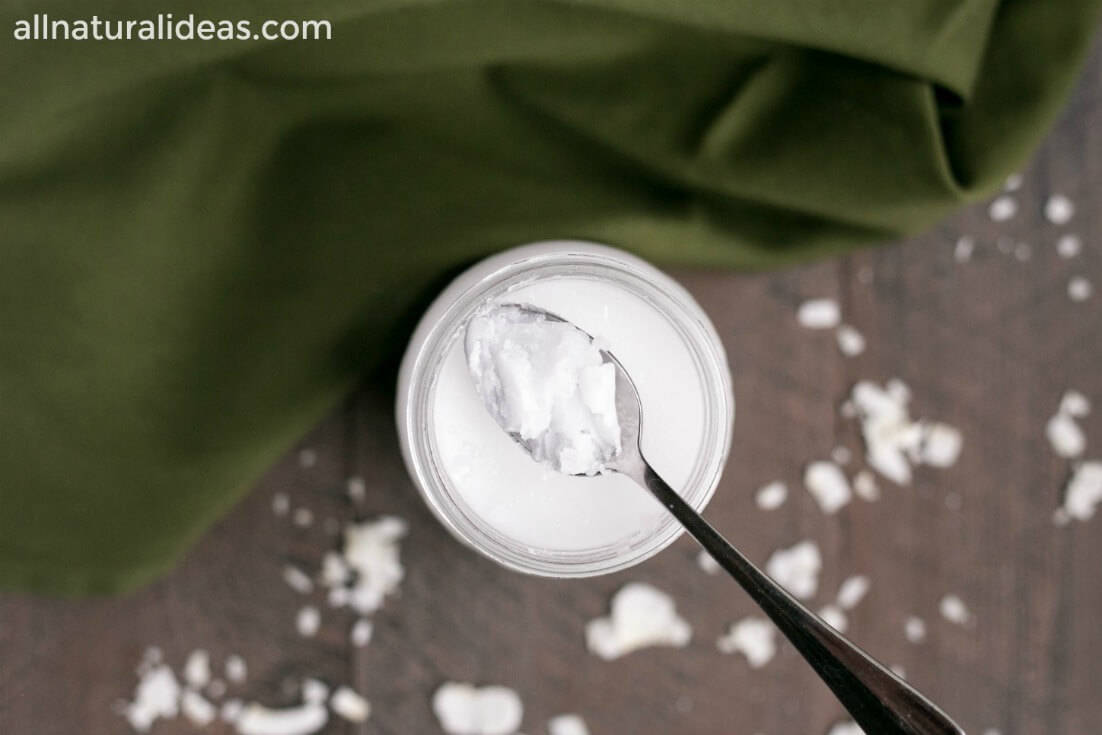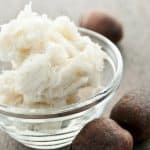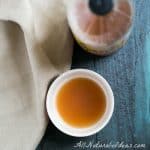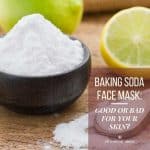Find out how coconut oil for keratosis pilaris can help banish bumps on skin. This natural treatment can smooth out any chicken and improve its appearance.

It might sound like a deadly disease. Though it’s harmless, this fairly common skin condition can cause distress for those that have it.
Known as “chicken skin” because it resembles small, hard, raised bumps, keratosis pilaris (KP) can look unsightly. This is especially true during warm or hot weather.
When everybody else is wearing tank tops and shorts, if you have this condition, you may not want to show some skin. Not when your upper arms and maybe even your legs have chicken skin.
Some sufferers of this skin condition have spent hundreds of even thousands of dollars going to dermatologists in the hopes of banishing KP. Then there’s all the skin-care remedies that seem to work at first, but ultimately aren’t a long-term fix.
Although a topical medication might work temporarily, the bumps keep coming back. Over-the-counter medications, creams, lotions, toners, and loofahs, also seem to work for only a few days before KP rears its ugly chicken skin again.
So how can you banish the bumps using an all-natural solution?

Using Coconut Oil To Treat Keratosis Pilaris
Some people have had lots of success using coconut oil for KP. In fact, coconut oil for keratosis pilaris reviews have been overwhelmingly positive.
Many people have tried lots of solutions, often spending lots of money in the process. After no luck with other remedies, many people have had success treating keratosis pilaris with coconut oil.
There are other natural solutions for KP that your dermatologist most likely wouldn’t tell you about. Coconut oil is just one of them.
Coconut oil for keratosis pilaris before and after pictures on the web seem to be convincing. What looked like a plucked chicken in many of the before pics surprisingly looks like healthy, radiant skin after.
Coconut oil is very versatile with many uses including a well known conditioner for hair and skin. It’s a great way to keep your hair and skin moisturized.
Many people are familiar with its use as a cooking oil. But why can it be effective for KP? The answer is in one of coconut oil’s main components, lauric acid.
Lauric acid is a saturated fatty acid. Don’t be scared off by mainstream medical advice to avoid saturated fats. Lauric acid, as it’s found naturally in coconut oil has several benefits including acne relief.
The reason why coconut oil works for treating KP is its naturally strong antibactericidal properties. Coconut oil also helps break up keratin. Keratin is the major protein that makes up the outer layer of your skin.
The so-called ‘keratinization’ of your skin causes clogged hair follicles. Clogged hair follicles equals chicken skin.
The fatty acids in coconut oil help reduce inflammation. Inflammation can manifest as clogged pores.
There are a few reasons why you might want to consider using coconut oil for KP:
- It’s cheap
- The oil is safe and mild
- It’s easy to use
- It addresses another root cause of KP
Root Causes Of Keratosis Pilaris
Clogged pores usually affect people with dry skin. But you don’t just get dry skin out of thin air like catching a cold. Skin conditions are often an indication of poor gut health.
Poor gut health has several root causes. Taking antibiotics can kill the good bacteria in your gut. Having insufficient stomach acid can also cause poor digestion.
When you don’t digest your food efficiently, inflammation can occur.
And this is where we get back to using coconut oil for KP. Because of its anti inflammatory compounds, coconut oil can be an effective all-natural solution for KP.
Coconut oil for chicken skin can be applied directly over your KP bumps. But you should also eat it every day too.
Add some to your coffee. Cook with it. Spread some on your low-carb bread for breakfast. Add some coconut oil to your morning smoothie.
Consuming coconut oil is a great way to make sure you’re getting plenty of lauric acid in your diet. So be sure to incorporate it into your diet regularly.

Keratosis Pilaris Home Remedy Coconut Oil Treatment
Dead skin cells need to be removed to treat KP. At home, the easiest way to get rid of dead skin cells is exfoliate. Next, while showering apply some coconut oil on the affected areas of your skin.
If you don’t like the greasy-like quality of coconut oil, you can also try babassu oil. Think of babassu oil as coconut oil’s first cousin. They are closely related. Babassu oil contains lauric acid but doesn’t leave the skin feeling greasy
Babassu is used similarly to how you’d use coconut oil for keratosis pilaris. With either coconut or babassu oil, you simply rub it into your skin for several seconds.
Both oils can penetrate deep into the epidermis. You can also use apple cider vinegar as a post-shower skin treatment, either internally or topically. Many people already use ACV for acne and other blemishes.
Another KP treatment you can use at home involves eating the right foods. As mentioned above, vitamin A can help prevent KP. But most people think if they eat enough carrots, they’re getting plenty of A.
Here’s the problem with beta-carotene: it’s not the exact same thing as vitamin A. If you’re looking for nutritional healing solutions for KP, understand that beta carotene is a precursor to vitamin A.
This is very similar to how vegetarian sources of omega-3 fatty acids are not as potent as animal sources. Walnuts and chia seeds might contain omega-3’s, but they don’t convert well into the more powerful omega-3’s, DHA and EPA, found in wild salmon.
Two sources of vitamin A are organic whole milk and cod liver oil. Even though it’s an easy way to get your intake of vitamin A, cod liver oil tastes nasty on its own. Many brands offer a lemon-tasting cod liver oil.

Quick Keratosis Pilaris Treatments
Now that you’re using coconut oil for keratosis pilaris through cooking, eating and topically applying on your KP areas, you should notice positive results soon. Those bumps should soon be a thing of the past.
Avoiding most dairy (a little grass-fed or raw cheese is ok) and other sources of dietary inflammation, especially sugar, will also make a difference. And so will adding more dietary sources of vitamin A.
But if you have a formal event and need to get rid of your KP bumps fast, what to do? You can use a gentle topical solution. But don’t use harsh, abrasive, highly acidic chemicals.
You can research a particular topical cream or lotion on the Environmental Working Group website. That way, you can feel confident that what you are putting on your skin is safe.
Try to avoid using harsh loofahs. These can do more harm than good for your skin. Instead, try dry brushing, which helps detoxify the skin and safely remove unwanted dead skin cells.
Gentle exfoliation, dry brushing and good nutrition, including coconut oil, can be an effective three-pronged approach for KP. Say goodbye to your chicken skin!





